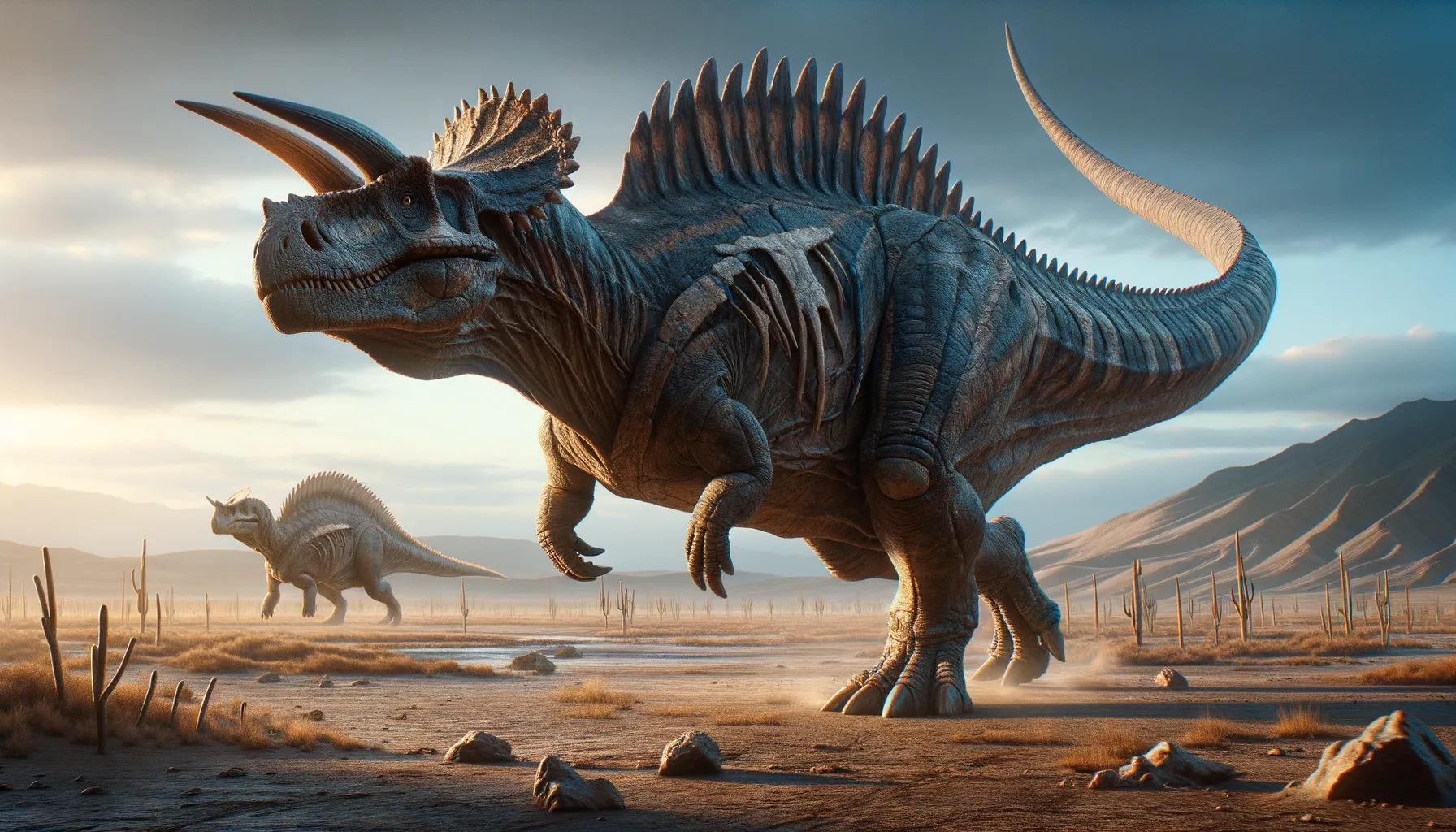
Gobisaurus
Armored giant of the Cretaceous desert.
Period
Cretaceous
Length
Measured about 6 meters in length.
Height
Stood approximately 2 meters tall at the shoulder.
Weight
Estimated to weigh around 2 tons.
Gobisaurus was a large, armored dinosaur from the Early Cretaceous period, with a body built for defense rather than speed. It belonged to the ankylosaur family, notable for its heavy armor and club-like tail. Fossils have been primarily found in the Gobi Desert, shedding light on its lifestyle in what is now Mongolia. Showcasing impressive evolutionary adaptations, Gobisaurus provides insight into the survival strategies of ancient armored dinosaurs.
Diet
Gobisaurus was a herbivore, primarily feeding on low-lying plants. Its diet consisted mainly of ferns, cycads, and other prehistoric vegetation it could the efficiently reach with its low stance.
Hunting
As a herbivore, Gobisaurus did not hunt other animals but focused on grazing for plants. It likely moved through its environment at a slow pace, carefully selecting vegetation to consume.
Environmental challenges
Gobisaurus faced environmental challenges such as a harsh, arid climate with seasonal fluctuations. It needed to adapt to periods of low food availability due to changes in vegetation cover. Predation by large theropods would have posed a significant threat, prompting it to rely on its armor for protection.
Speed
Gobisaurus was not particularly fast, moving at a slow pace.
Lifespan
Lived for decades, possibly around 50 years.
First discovery
First discovered in the Gobi Desert of Mongolia in 1997.
Fun Facts
- Gobisaurus was a dinosaur that lived around 90 million years ago during the Late Cretaceous period.
- The name 'Gobisaurus' means 'Gobi Desert lizard', named after the region where its fossils were found.
- Gobisaurus was an herbivorous dinosaur with a body covered in bony armor for protection against predators.
- This dinosaur belonged to a group called ankylosaurs, known for their heavy armor and club-like tails.
- Gobisaurus fossils were first discovered in China, in the Gobi Desert, which is a rich site for dinosaur remains.
- Despite its size and armor, Gobisaurus was a plant eater, likely feeding on low-lying plants.
- Its exact size is not certain, but Gobisaurus is estimated to have been around 5 to 6 meters long.
Growth and Development
Gobisaurus likely grew steadily over the years, undergoing significant developmental changes from juvenile to adult. Its distinct armor and tail would have developed and hardened fully as it matured. This gradual growth ensured that it remained protected and could feed efficiently throughout its life.
Habitat
Gobisaurus inhabited desert and semi-arid regions with sparse vegetation. Its environment consisted of broad, open landscapes, allowing it to move freely in search of food. The Gobi Desert, where it lived, would have offered both the challenges of aridity and the advantages of fewer competitors for its plant-based diet.
Interaction with other species
Gobisaurus may have interacted with other herbivores within its habitat, competing for the same food resources. Its armored body provided a deterrent against predators like velociraptors. Its presence would have been an imposing feature in its ecosystem, impacting the behavior of both predators and other herbivores.
Natural lifespan
Gobisaurus could naturally live up to around 50 years.
Reproduction
Gobisaurus likely reproduced by laying eggs in nests, similar to other armored dinosaurs. Parental care may have been minimal, with young gobisauruses having to fend for themselves soon after hatching. Its reproductive strategies ensured the continuation of its species in a challenging environment.
Social behaviour
Gobisaurus might have had a solitary existence, but it is possible that it lived in small groups for increased protection. Social interactions could have included mating displays or territorial behavior. These interactions would have helped it adapt and survive in groups or as individuals.
Fossil locations
Fossils of Gobisaurus have predominantly been found in the Gobi Desert, particularly in Mongolia. The discovery of its remains has provided insights into the dinosaur diversity in this region during the Cretaceous period. These fossils help paleontologists understand the broader ecological dynamics of the time.
